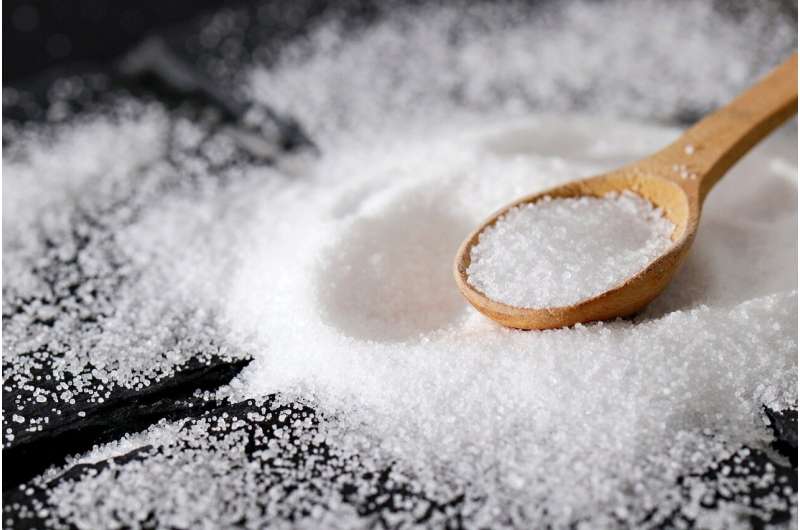This article has been reviewed according to Science X's editorial process and policies. Editors have highlighted the following attributes while ensuring the content's credibility:
fact-checked
trusted source
proofread
Salt seekers: Sodium reduction initiative thwarted by consumers

As a group, Americans consume more salt than recommended by health experts, and when presented with reformulated products containing less sodium, they opted for saltier alternatives, essentially negating a pivotal initiative to reduce sodium intake, according to new research co-authored by a University of Massachusetts Amherst economist.
Christian Rojas, professor of resource economics at UMass Amherst, found that shifting consumer behaviors wiped out 90% of the sodium reduction observed in manufactured products over an eight-year period. These mitigation efforts by manufacturers occurred around the time of the National Salt Reduction Initiative (NSRI), a five-year campaign launched in 2009 to reduce Americans' sodium intake by 20% by removing salt from food products.
Rojas and co-author Ezgi Cengiz, an economist at North Carolina State University, reveal that if consumers had maintained the same grocery buying habits that were in place before the NSRI, salt intake would have declined by 53%. However, because consumers embraced saltier alternatives, sodium intake declined by less than 5%.
"We observed that consumers were reluctant to adopt reformulated products fully," Rojas says. "Manufacturers can be reluctant to change their products because people get used to certain tastes and flavors. In this case, we believe that firms may have reformulated too quickly."
Of the reductions in sodium intake that did occur, the research found that Black, Hispanic and lower-income households experienced smaller declines compared to white and higher-income households—despite the availability of more healthy alternatives.
"Most of these disparities were driven by consumer choices rather than what products were on the shelves," Rojas notes.
To reach their findings, Rojas and Cengiz analyzed the sodium content of more than 589,000 barcoded food products across 15 categories—ranging from cereals to canned fish—first in 2007, before the NSRI was implemented, and again in 2015, following the final year of the initiative.
Though the human body requires a certain amount of sodium to function, excessive amounts are strongly associated with high blood pressure and cardiovascular disease. One estimate suggested that cutting Americans' sodium intake by about 50% could reduce medical expenses by $32 billion and save 100,000 lives annually.
Rojas says the results show that reformulating products to make them more healthful can only do so much. He says policies focusing on consumer eating habits and encouraging a more nutritious diet may yield better results.
"We still need to ensure that manufacturers are improving their products, but, given what we see here, you will get a bigger bang for your buck if there's more of a focus on how people eat rather than on the supply side," he says.
The findings are published in the journal Food Policy.
More information: Ezgi Cengiz et al, What drives the reduction in sodium intake? Evidence from scanner data, Food Policy (2023). DOI: 10.1016/j.foodpol.2023.102568




















